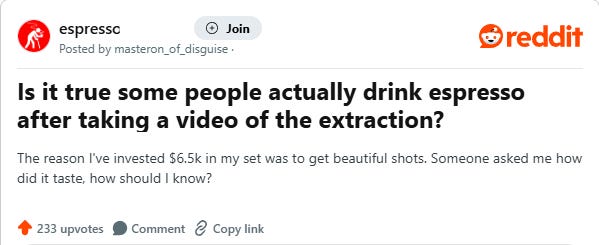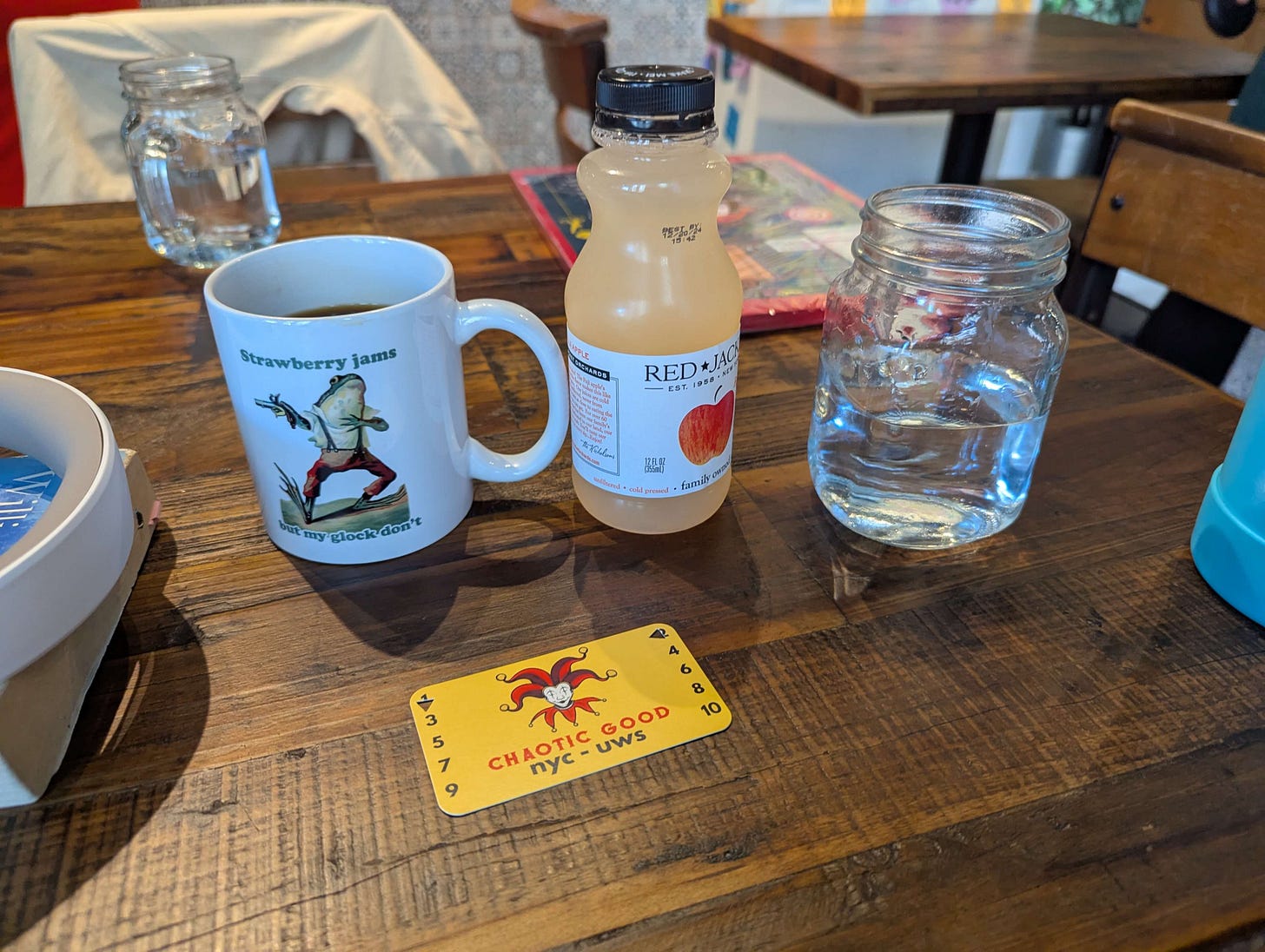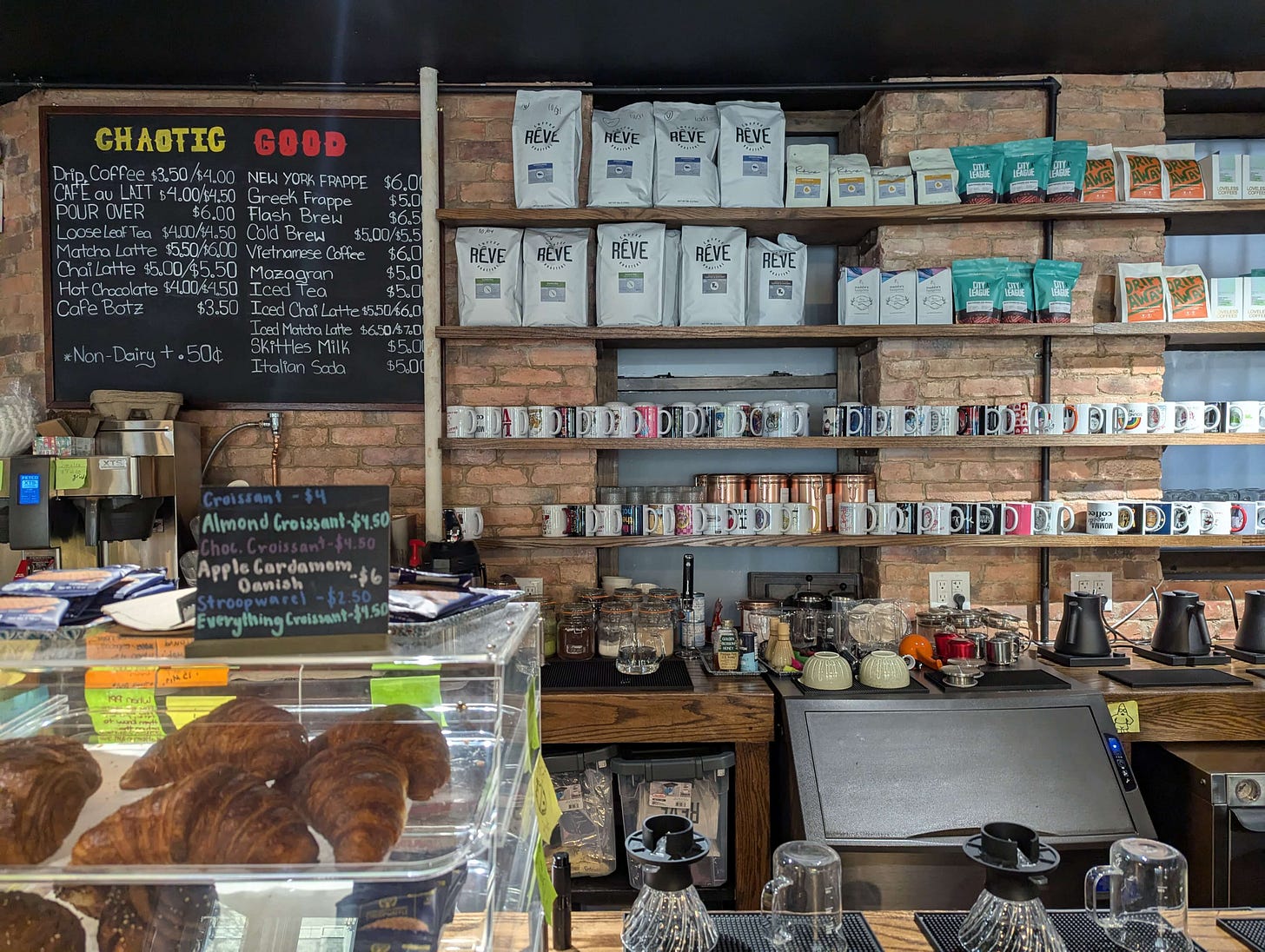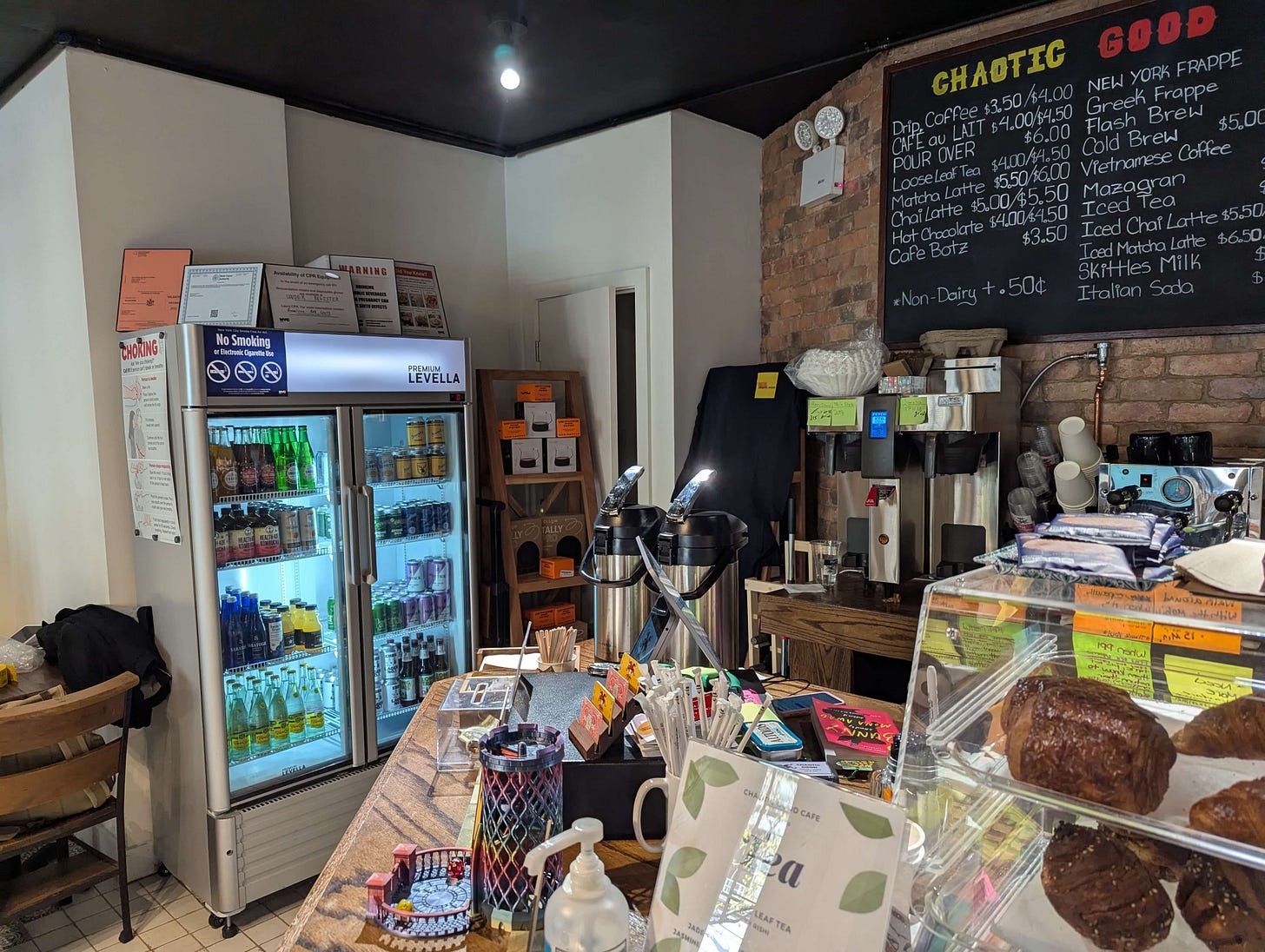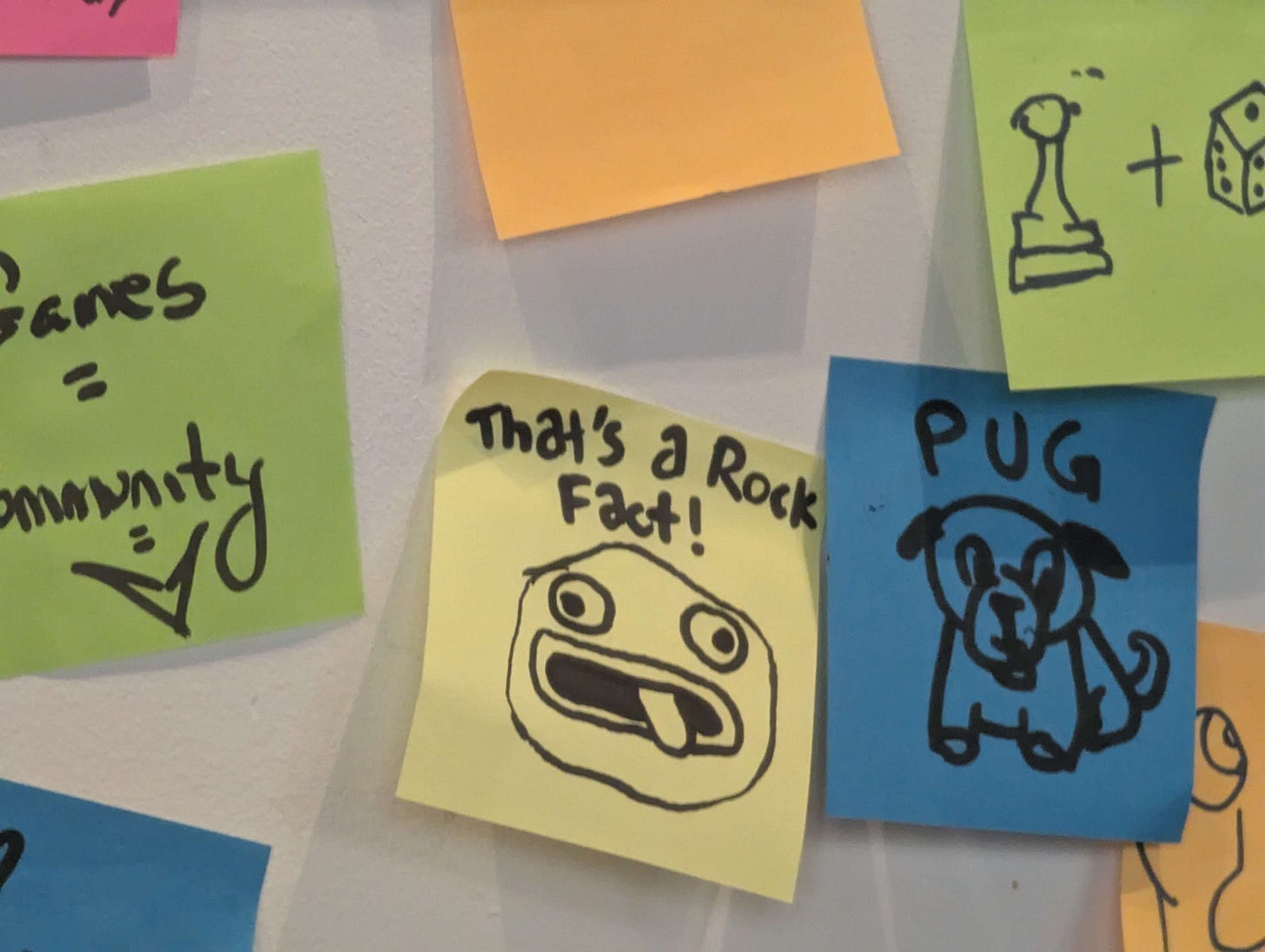Oh man, talk about terrible ideas.
This up first: I got a new keyboard (the same one, just new1) with a working period [.] key. So it’s finally time to write again. Smooth.
With that, welcome to the newsletter!
Terrible Ideas, you said?
Why yes.
Today we’re doing acquired taste:
why coffee tastes better for you than it does for me,
and why I can handle way more sugar without a bother. Even simpler:
Why some people like to add cream and sugar and some don’t.
Here’s the thing: if we know why we have acquired a taste, we can force ourselves to acquire it using on the methods that work.
Because maybe that strong, bitter flavor can be acquired in 3 weeks by drinking coffee, coffee, and coffee every day. That doesn’t sound very enjoyable.
Maybe in only 1 week by drinking coffee, chickpea juice, and juniper berries. Think about that for a second. If something like juniper berries allows you to taste coffee better ignore the bitterness more effectively, there should be a cocktail of ingredients that can allow us to professionally taste coffee in record time. It would mean we could “force” our palettes to be the same, making roasting and tasting much more reliable.
It means the appetizer is no longer to get you in the right headspace, but equalize the many different palettes so all judges and consumers taste exactly the same thing.
Do we think that medieval farmers, with much less dietary sugar than the modern American, could tolerate a straight, black coffee right away?
Here’s a current flavor wheel for a professional coffee taster (from NotBad Coffee, for the official Q-grader2 version, see this link: SCAA3):
Here’s the crux of this newsletter today:
My palette is a good example — I cannot taste “sweet” [losing out on part of this wheel] and overtastes on “bitter” flavors [outcompeting other flavors]. Most people starting in coffee are the same way.
A professional can taste sweet, and almost entirely ignores bitter flavors from most specialty coffees. Similarly, those with ‘spice tolerance’ have receptors responding less to stimuli as you eat more spicy food.
You can eat things to increase stimuli response, decrease the response, and, as a separate issue to tackle, can eat foods to allow your brain to focus on certain flavors over other.
And:
We can control the response of coffee by equalizing a person’s biological response to stimuli. Maybe.
Some cool takeaways:
Controlling your palette is a crazy useful concept, and we already have some adjustments we know of, such as the ‘miracle fruit’, which makes sour things taste sweet. I mean, sure, I can make coffee taste the same to you as it does to the farmer. Big Whoop.
But, what if it could mean that an influencer could tell you exactly what their palette is — so you can compare if their recommendations are things you would like? We already do this with some things, like “if you like La Colombe I am not taking any coffee recommendations from you”, but what if we developed a “palette category”, where if we’re in the same category we’ll like all the same things?
With enough time and money, an influencer could run through a few hundred coffee shops, and then do it again with a different palette. A review for everybody [If anyone has an extra $35,000 and a cameraman, call me].
I could create and offer palette definers, allowing people to taste coffee like a pro, taste wine like a sommelier, taste like a rich person and enjoy caviar! and other marketable palettes.
I am gonna start selling palette hacks on the black market, watch.
Taste chicken like an early 1800’s Ellis Island immigrant!
Taste this tomato like the Italian Chef who invented pizza!
Learn to enjoy Folgers!
If you remember apples 20 years ago, or tomatoes in literally any other country aside from the US, they tasted a lot different. We could sell palette hacks to prime your brain for the flavors that we like in these things, making them taste like the best versions of themselves. A true gastronomic enterprise could take terrible ingredients, prime the palette, and have them taste like heaven. A really useful idea insofar as climate change changes our soil forever.

What we know
There’s a lot of paths to get to Rome4:
Desensitizing receptors, like with spice tolerance. The more you give, the less they’ll taste. Hopeful candidate for eliminating the bitter taste.
Transforming the way our brain interprets taste—a hopeful candidate for helping differentiate flavors we’re already tasting but can’t isolate.
Assisted taste, like with the “magical fruit”—adds receptors to our sweet receptors that activate in the presence of sour. [Sour activates them, then they activate our sweet].
Another brain thing, where we gaslight the brain into expecting certain flavors. This is already done everywhere—the name of your food impacts how you see it; what you focus on.
An example:
Rose latte, a latte with rose syrup and a few petals on top, vs.
“Tokyo espresso martini”, the same thing, served in cherry blossom season
Now what?
Now, we have to wait for me to test. Test everything. It’s going to be painful and expensive, but I’ll do it for you.
And mostly because this newsletter will run out of room if I put these all in the same one. See you next week!
Break time!
Today’s meme:
And now…
This week’s coffee shop spotlight!
It’s said a picture can say a thousand words:
Chaotic Good is a new(ish) coffee shop on the UWS whose namesake comes from a Dungeons & Dragons alignment chart (do good, do it however you want). It’s a great and large spot containing a slew of board games and card games that you can play at the price of a coffee.
I can say this for certain: This place is made by people that care.
Way too many great options for a coffee shop, including pourovers that seem specialty and a lot of milk drink options you might not be used to.
And mugs and mugs galore. Amazing.
Go to Chaotic Goods! They’re great! Games = Community.
Thanks for tuning in!
Enjoy your coffee!
You know an experiment’s good when the footnotes section is a novel.
The Cherry brand is known for switches, which are the toggles underneath good keyboards. If you’ve ever tried to buy a fancy keyboard, you’ve probably noticed that there are options, from red to brown to black, denoting clickyness and pressure required to activate. The cool part is that cherry makes their own keyboards, and instead of paying a week’s salary you can pay 25$ and get something that works perfectly, has a great feel, and includes a numpad. Their support is excellent, too. You might want fancy lights or pretty colors, but for the basic equipment that does the job extraordinarily well, the company that makes the switches can’t be beat. This is not sponsored I just think more people should have good, cheap things.
Q-grading, which will likely be in a future edition, is an incredibly challenging course+test where people are certified in ‘tasting’ coffee professionally. A Q-grading qualification is needed to give a coffee a rating from 0–100 [really, around 28—100]
The SCAA’s coffee tasting wheel is under a non-commercial license, meaning if I ever charge for this newsletter it’ll be legally dubious to use it with abandon.





